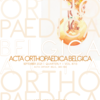Femoral bone growth after extendible endoprosthetic replacement of the proximal tibia in skeletally immature patients
femoral bone growth ; extendible endo-prosthesis ; proximal tibia resection
Published online: Nov 22 2021
Abstract
There is increasing preference for limb salvage techniques in the management of pediatric musculo- skeletal tumors. This study was aimed at evaluating femoral growth following proximal tibia resection (PTR) and placement of an extendible endoprosthesis with sliding stem. This was a retrospective study. The demographic and clinical data were collected. All the patients with malignant tumors were fully staged and commenced on appropriate chemotherapy. An expected discrepancy of > 3cm was considered substantial enough to warrant extendible prosthesis. Twelve patients who had follow up full length scanogram of the lower limbs were included for the evaluation of femoral growth. The last available scanograms were used for growth comparison of the femur. The age at resection for all twelve patients ranged from 4-13 years. The commonest histological diagnosis was Osteosarcoma. In the twelve patients assessed for the growth of femur, the mean femoral length was 96% [89%-102%] of the unaffected femur. Distal femoral physeal growth continued after implantation of a sliding extendible prosthesis after resection of proximal tibia tumors.
